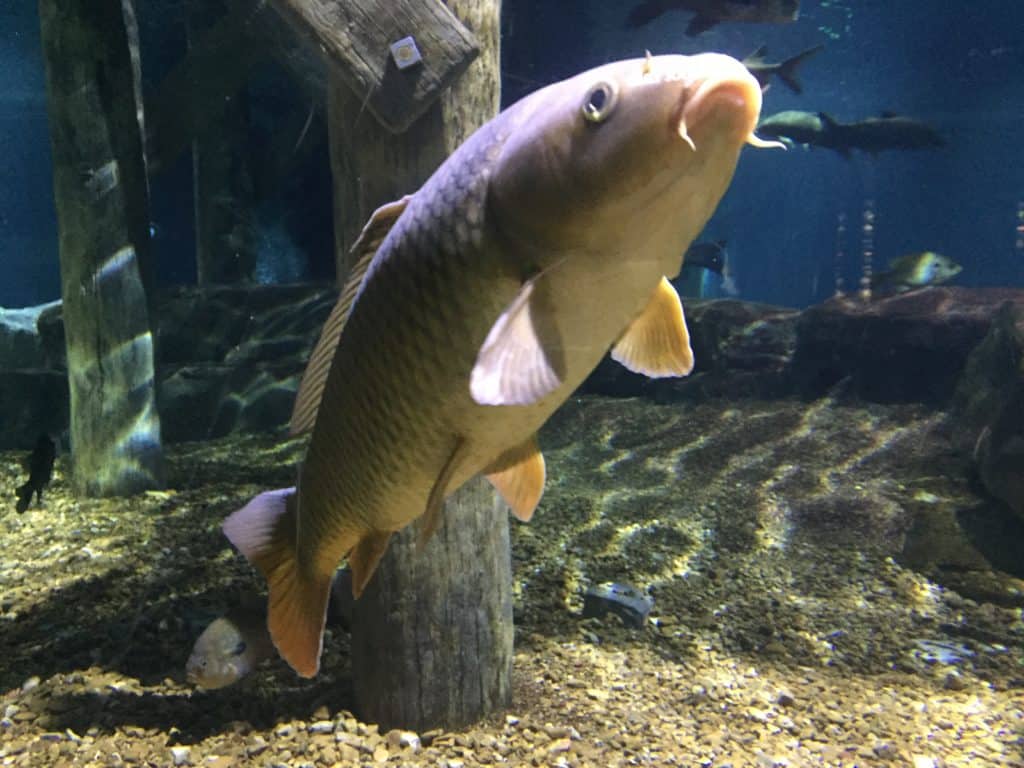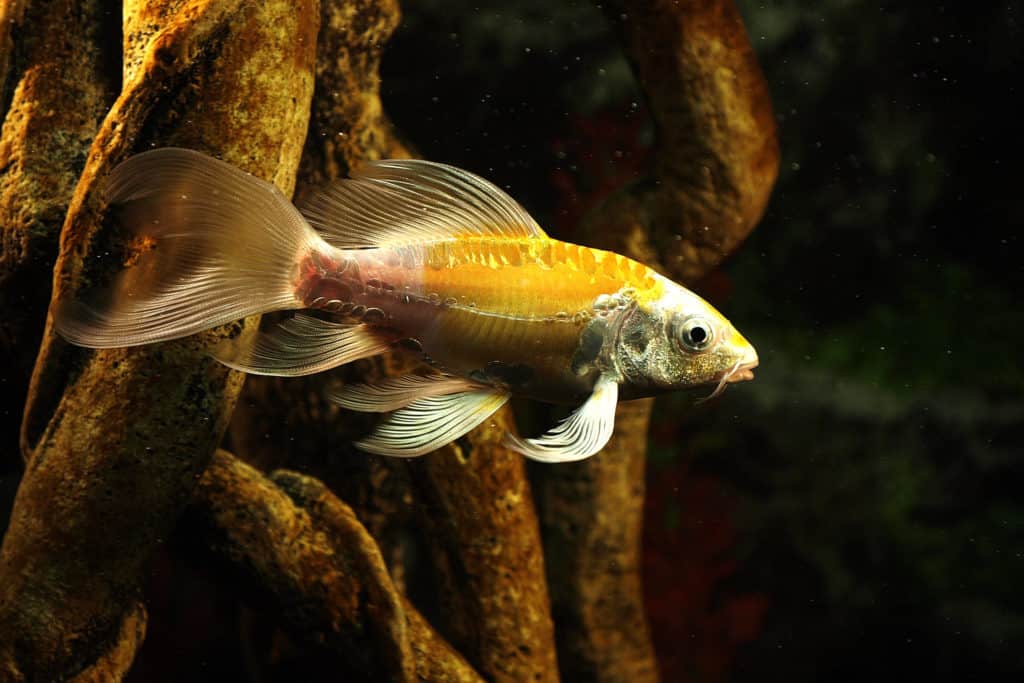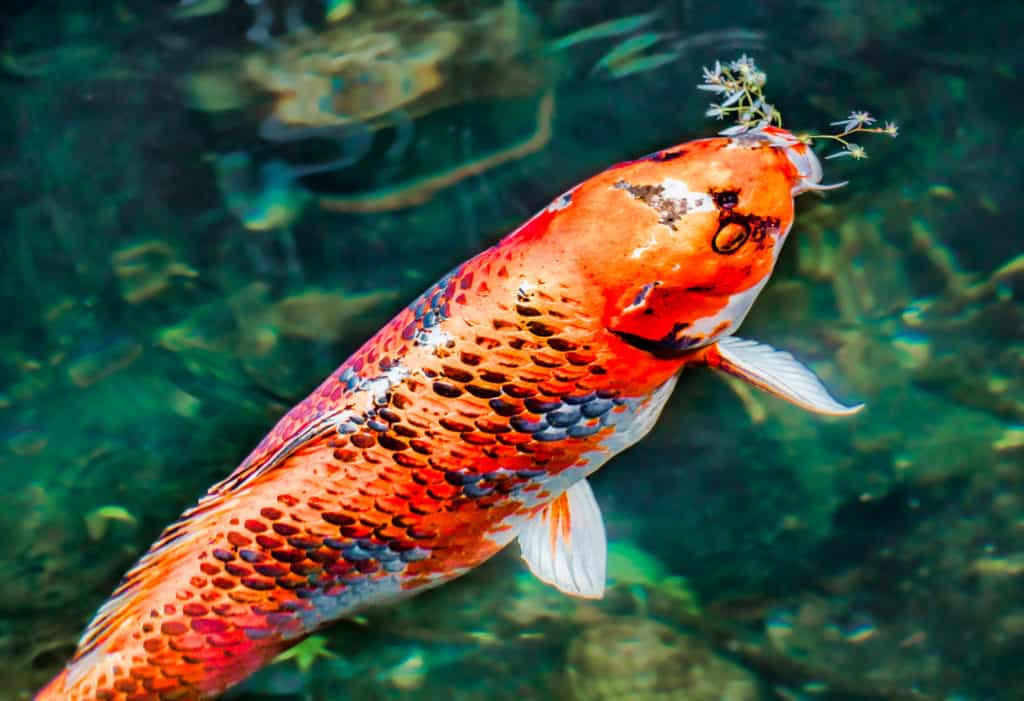The koi fish, also known as the nishikigoi, is Japanese for “brocaded carp.” Japanese koi fish set the standard for all koi competitions and have some of the strictest breeding practices around. Interested in learning all about Japanese Koi Fish? Be sure to check out our Koi Health Seminar Series for more information.
History of Japanese Koi Fish
Koi, as we know them today, originally descended from the Common carp (Cyprinus carpio), that were kept across Asia as a food source. Over time, natural mutations in color were noted, and individual fish were set aside in special ponds. Breeding these mutations together over countless generations led us to the koi varieties we know today.

Types of Japanese Koi Fish
There are many varieties of koi colorations, and countless more fish who don’t fit the “traditional” patterns or are a combination of patterns. In the United States, only koi bred in Japan and shipped over are known as “Japanese Koi Fish.” Even if their parents both can from Japan, all koi born in the US are known as “domestic koi.” This is due to the very strict and rigid breeding and selection standards in Japan that are not seen in the United States or other countries. This causes Japanese koi fish to carry a premium price, with most koi show winners being Japanese koi fish.
The Gosanke
The Gosanke contains the kohaku, sanke and showa varieties of koi. These fish are the most prized, the most expensive, and typically win koi shows’ top prizes.
Butterfly Koi
The butterfly koi, also known as long-fin koi, have long, flowing extensions to all of their fins. Even their nasal folds may be elongated and look like “eyelashes,” hindering their vision. These delicate fins are prone to tears and scarring, so many butterfly koi do not have their full fins for very long.
Doitsu Koi
A German variety of koi, “doitsu” is “german” in Japanese, these koi have limited scales, usually along their sides and dorsal ridges, known as a “zipper.” It bred with regular, scaled koi, these fish can have patches of scales or very large scales. Often, when these fish lose a scale, it may look like a large hole in the side of the fish! But not to worry, these usually heal up normally.

Keeping Japanese Koi Fish
Japanese koi fish are typically kept in outdoor ponds. They are MUCH too large to be kept in indoor tanks unless the aquarium is several thousand gallons. We recommend a minimum of 250 gallons per koi. Although they start very small, these fish have the potential to be over 24″ or larger! Click here for more koi fish pond basics.
There are many myths when it comes to keeping koi in outdoor ponds:
You can’t mix koi and goldfish.
You can absolutely mix koi and goldfish. Yes, it is possible for the goldfish to carry diseases and not show signs, but there is the same risk in koi. This mostly applies to koi herpesvirus or KHV. Here are some other species that you can consider for an outdoor pond.
You can’t put plants in a koi pond.
You can absolutely put plants in your koi pond, provided you quarantine them properly. Koi are known for nibbling on plant roots and can utterly destroy them during spawning season, so unless you take protective measures, don’t get too attached. Here is a list of the best plants for koi ponds.
You don’t have to feed your koi because they eat the algae.
Koi are omnivores and although you may see them nibbling on algae, they are actually eating the bugs that live in the algae. Their common carp ancestors are big bug eaters and usually forage in the bottom of lakes and ponds throughout the day. Domestically kept koi ABSOLUTELY have to be fed regularly, although your water temperature will dictate how often. Here is more information on what to feed your koi.
“All natural” koi ponds are better for your fish.
“All natural” is also known as “lazy fish keepers.” In rare instances, with well established systems with very low bioload (fish : water), you can get away with VERY minimal maintenance. But most fish systems are synthetic ecosystems which will require human care. Here is a checklist with common pond tasks. If you don’t want to do it, there are many services that may be able to help.
Keeping Japanese koi fish can be a very enjoyable experience, and more so when you do proper planning and education. Check out our Koi Health Seminar Series to learn more about these amazing fish!

